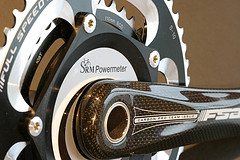1 – Comparing heart rate values with others
The fact is that you can only compare heart rate values with your own previous registrations. The reason for this is that we all have a different anatomy of our cardiovascular system. But these systems are all based on the same physiological mechanisms. Thus, we can learn from each others’ physiological experiences and adaptations, but we can’t compare individual heart rate values. E.g. your resting heart rate is 58bpm while your friend’s heart rate is 42bpm, still I can’t say which one of you are in the best shape nor have the highest VO2 max.
Your maximum heart rate is correlated to your age, but that does not mean that we all fit in to 220-age formula. There is a huge standard deviation because we all are anatomically different. Just like with the resting heart rates, maximum heart rates does not predict performance.
2 ”“ Not being aware of factors affecting heart rate
Your working heart rate at the same external workload changes from day to day because it is affected by several factors including caffeine, water balance, temperature, physical stress, psychological stress etc. Thus, you should know how these things affect your heart rate since that is essential if you want to use your current heart rate for pacing. Taking action of the response from your heart rate monitor on your effort is an important part of using this tool. E.g. if you feel your heart rate is too high compared to the workload, then consider if there is a good reason for this (dehydration, too much coffee etc.) When you have found the answer, then take action on it.
3 ”“ Not analyzing heart rate data
Heart rate monitor training is much about analyzing. If you have an advanced or professional heart rate monitor from Polar, you can collect tons of data for analyzing on your personal computer. This is an important process if you want to get the full value out of your heart rate monitor. When you get used to see your heart rate records, you will begin to get a deeper understanding of how your body works. If you add some studying in exercise physiology to your analyzing, you will be able to make better decisions about your future cycling training. And that is exactly the point of spending reviewing your bike rides.
4 ”“ Wrong use of heart rate monitor during races
When you enter a race, you will see that you are able to ride faster than you normally do at training. It is difficult, if not impossible, to make clever decisions based on your current heart rate in a cycling race. I’ve heard several riders give up, when they were trying to jump from the peloton because they thought their heart rate indicated that they should slow down. That is definitively a big mistake since there is large tactical factor in play in cycling races. Thus, if you are lucky, the peloton will slow down and stop struggling to close the gap. And that is why experience is so much more important in races than heart rate registrations.
5 ”“ Wrong use of target zones during training
Heart rate target zones are a way to categorize different types of training. Many riders use basic training programs where they are supposed to work at percentage of their maximum heart rate. But these programs are born to be inadequate since there is a huge deviation in relative working heart rates (Just like with minimum and maximum heart rates). Thus, these target zones should be based on your personal experiences and testing procedures, not a general formula. Also I will recommend you to not making the target zones to small, because of the factors influencing on the heart rate. One day you are in top of the target zone and the next day you are in the bottom, but the subjective feeling might be the same. Thus, if the interval is too small you are likely to cross the limits which will make you work either easier or harder to stay in the target zone.

